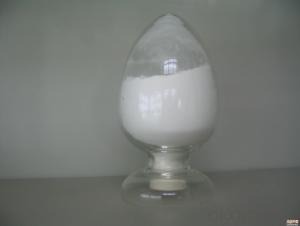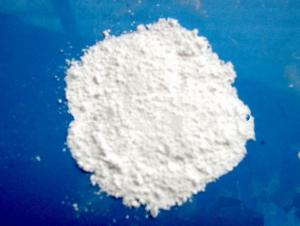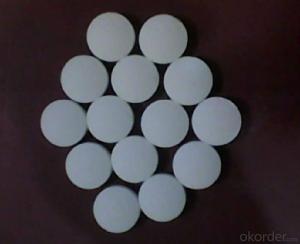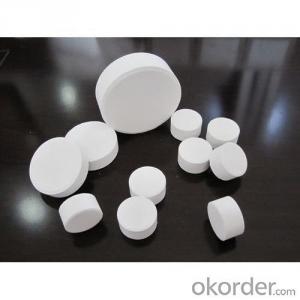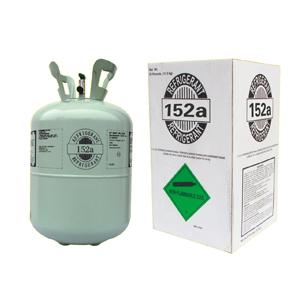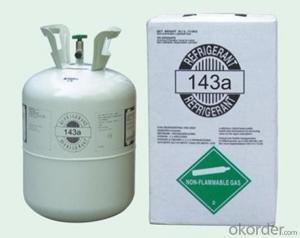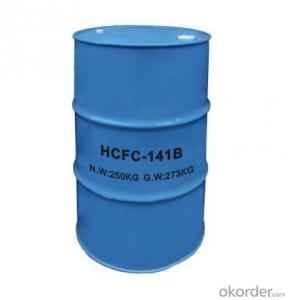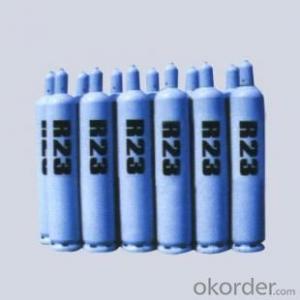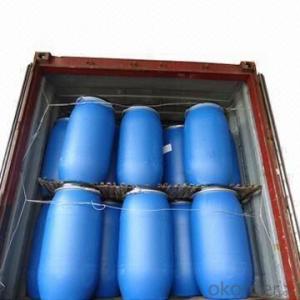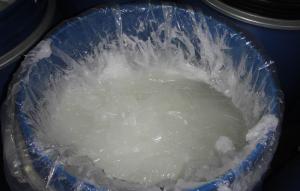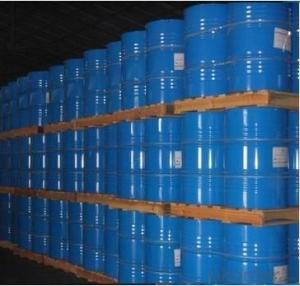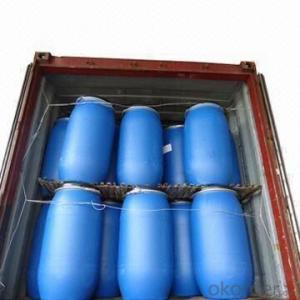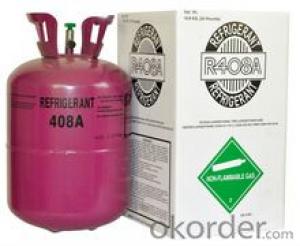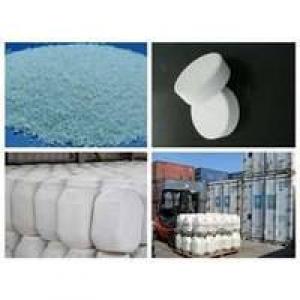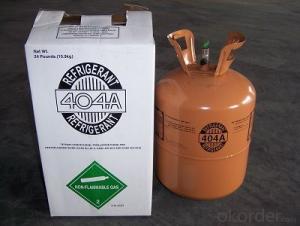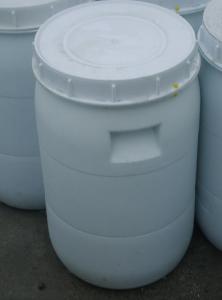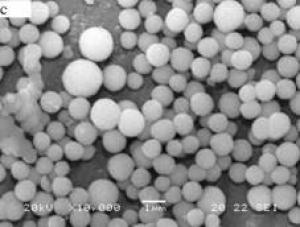Sodium Lauryl Ether Sulphate SLES
- Loading Port:
- China Main Port
- Payment Terms:
- TT OR LC
- Min Order Qty:
- -
- Supply Capability:
- -
OKorder Service Pledge
OKorder Financial Service
You Might Also Like
Packaging & Delivery
| Packaging Detail: | 170kg/220kg/1200kg |
| Delivery Detail: | 7 days |
Specifications
detergent sodium lauryl sulphate / sles liquid
Manufacturer
Delivery on time
Free sample
Best price and quality
1.Paste SLES70%
2.Anionic surfactant SLES 70% (2EO/3EO)
3.Useage:shampoo,dish detergents,complex soap.
4.BV, ISO & SGS Cert.
SLES 70% for Detergent,Sodium Lauryl Ether Sulphate AES AND SLES 2 EO SLES 70%
HOT SALE Sodium Lauryl Ether Sulfate (SLES )
1.Product Name: Sodium Lauryl Ether Sulfate (SLES )
2.Description: SLES is a kind of anionic surfactant with excellent performance.
It has good cleaning, emulsifying, wetting, densifying and foaming performance,with good solvency, wide compatibility, strong resistance to hard water, high biodegradation, and low irritation to skin and eye.
3.Technical data:
Item | Index | measuring method | |
70% | 28% | ||
Appearance | White to yellowish paste | Colorless to yellowish clear liquid | eye measurement |
Active matter, % | 70±2 | 28±1 | GB/T 5173-1995 |
Sodium sulfate, % (relative to 100% active matter ) | 1.5 max. | 1.5 max. | GB/T 6366-1992 |
Unsulfated matter, %( relative to 100% active matter) | 2.0 max. | 2.0 max. |
|
pH value (1% a. m.) | 7.0~9.0 | 7.0~8.5 | GB/T 6368-1993 |
Color, Hazen (5% a. m.) | 20 max. | 10 max. | GB/T 3143-1982 |
4.Application
1.Liquid diswashing agents
2.light-duty detergents
3.shampoo, shower gels, foam baths
4.suited for highly concentrated endproducts
5.Packaging: 110kg /170kg/220kg (N.W.) per plastic drum.
- Q: Simply talk about hydrocarbons
- Hydrocarbon products in the daily production, life is widely used, the most representative of the commercial life of the HCR433b hydrocarbon refrigerant, and the most representative of the automotive HCR436a hydrocarbon refrigerant.
- Q: Such as the problem, and how, how to squeeze methane into liquid, or how to squeeze into the liquid gas? It is still very difficult ... there is a dangerous thing .... (this is not important) high reward
- Pentane, g, x, n, decane, to eleven to hexadecane are liquid hydrocarbons. Ethanol is not a hydrocarbon, it is aerobic. Polymeric material is a compound of relatively high molecular weight Composition of the material, there are many, such as rubber, plastic, fiber, paint
- Q: Will AsH3 (arsenic trioxide) is organic or inorganic
- AsH3 (arsine trihydride) is not containing C element
- Q: What are the inorganic compounds
- Hydrocarbons and their derivatives.
- Q: Artemisinin is not a derivative of hydrocarbons
- Artemisinin is a colorless needle-like crystal obtained from the compound inflorescences Artemisia annua L., which is (3R, 5aS, 6R, 8aS, 9R, 12S, 12aR ) - octahydro-3,6,9-trimethyl-3,12-oxo-12H-pyran [4,3-j] -1,2-benzodiazepine-10 (3H) -one. Molecular formula for the C15H22O5.
- Q: What is the difference between hot and cold asphalt?
- I only heard the warm mix of asphalt. The How is cold asphalt defined? How much is it cool?
- Q: Is the carboxylic acid derivative and the substituted carboxylic acid the same concept?
- Substituted carboxylic acids can be thought of as hydrogenated atoms in the carboxylic acid molecules that are replaced by other functional groups. The most common is that the hydrogen atoms are replaced by halogen, hydroxyl, oxygen or amino groups to form a halogenated acid , Hydroxy acids, oxo acids or amino acids such as chloroacetic acid: ClCH2COOH
- Q: The nature and use of cellulose derivatives
- By replacing the reagent selection and process design, the product can be dissolved in water, dilute alkali solution or organic solvent, or have thermoplastic properties such as chemical fiber, film, film, plastic, insulating material, coating, slurry , Polymeric dispersants, food additives and household chemical products. The nature of the cellulose derivative and the nature of the substituent, the degree of substitution of the three hydroxyl groups on the glucose group, and the distribution of the substituents along the macromolecular chain. Due to the randomness of the reaction, the following three substitutions are different in other cases (homogeneous or heterogeneous reactions) except that the three hydroxyl groups are substituted (DS = 3) And non-substituted glucose groups: (1) monosubstituted (DS is 1, C, C or C position is substituted, the structural formula see cellulose); ② disubstituted (DS is 2, C, C, C, C Or C, C position is replaced); ③ total substitution (DS is 3). Thus, the properties of the same cellulose derivative having the same substitution value may also be quite different. For example, the cellulose diacetate which is directly esterified to DS of 2 is insoluble in acetone, but the cellulose diacetate obtained by saponification of the fully esterified cellulose triacetate can be completely dissolved in acetone. The irreducibility of this substitution is related to the basic rule of cellulose ester and etherification.
- Q: Are hydrocarbons are hydrocarbons and that alcohols? Is it carbon dioxide?
- Is a hydrocarbon derivative.
- Q: What are the sugars?
- Carbohydrate carbohydrates, also known as carbohydrates, are the most widely distributed and most important organic compounds in the world. Glucose, sucrose, starch and cellulose are all carbohydrates. X0d carbohydrates are all organisms The main source of energy needed to sustain life activities is not only nutritious but also has special physiological activity, such as: heparin in the liver has anticoagulant effect; blood sugar in the blood type related to immune activity.In addition, the nucleic acid The carbohydrate compounds are more important for medicine, and the carbohydrate compounds are composed of three elements, C, H and O, And O is usually 2: 1, and the proportion of water molecules, which can be expressed by the general formula Cm (H2o) n.Therefore, these compounds have been called carbohydrates, but later found that some compounds according to their structure and (C6H12O5), deoxyribose (C5H10O4), etc .; and some compounds such as acetic acid (C2H4O2), lactic acid (C3H6O3), and other compounds, such as acetic acid (C2H4O2), lactic acid (C3H6O3) And its composition is consistent with the general formula Cm (H2o) n, but the structure and properties are completely different with the carbohydrate compounds, so the name of the carbohydrate is not exact, but for a long time, so far still in use. X0d from Chemical structures, carbohydrates are polyhydroxyaldehydes, polyhydroxy ketones, and their condensates. <X0d sugars can be divided into three categories according to the hydrolysis and hydrolysis products: x0d monosaccharides: polyhydroxyalides that can not be hydrolyzed Such as glucose, fructose, etc. x0d disaccharides: hydrolysis of sugar to produce two molecules of monosaccharides such as sucrose, maltose, etc. x0d polysaccharide: can be hydrolyzed to produce many molecules of sugar monosaccharides such as starch, glycogen, Cellulose, etc. x0d sugars often use their names according to their origin.
Send your message to us
Sodium Lauryl Ether Sulphate SLES
- Loading Port:
- China Main Port
- Payment Terms:
- TT OR LC
- Min Order Qty:
- -
- Supply Capability:
- -
OKorder Service Pledge
OKorder Financial Service
Similar products
Hot products
Hot Searches
Related keywords
